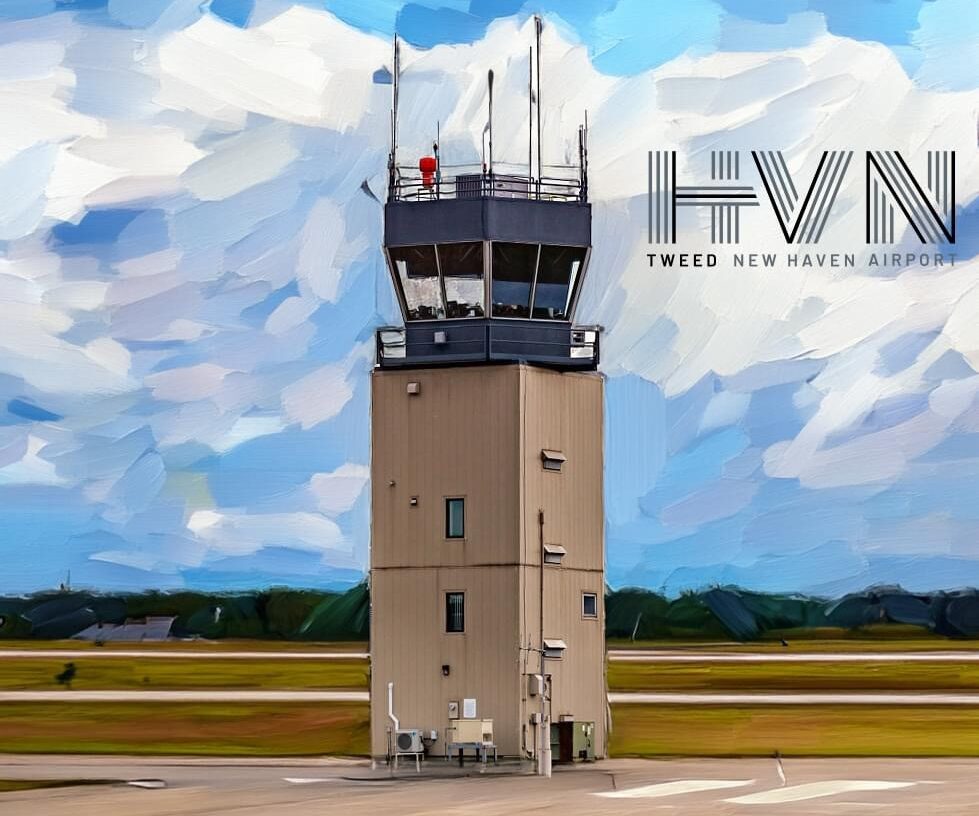Noise
Our Commitment
Tweed-New Haven Airport (HVN) is committed to transparency, actively engaging with our community, and taking actionable steps to manage noise concerns. These efforts reflect our broader commitment to maximizing aviation’s significant social and economic benefits while minimizing its impact.
Building strong relationships with the community is integral to our mission, and we welcome ongoing dialogue from residents on this important issue.
That is why HVN has implemented several key initiatives to monitor, measure, and reduce the impact of aircraft-related noise, including:
Noise and Aircraft Monitoring
HVN launched WebTrak, an online platform providing community members with real-time data on local aircraft activity and noise levels. The system is powered by the industry-recognized Airport Noise and Operations Monitoring System (ANOMS), which collects noise data from two portable monitors. This data is integrated into the WebTrak dashboard, offering the community up-to-date information. WebTrak is available at the link here.
Please note that the portable noise monitors may experience occasional offline status during inclement weather events or while transitioning between locations.
Residential Sound Insulation Program (RSIP)
Since 2014, HVN has distributed nearly $12 million dollars in federal funding to soundproof nearby homes. The most recent phase was completed in 2023, treating a total of 181 households under the prior FAA-approved contour map. Tweed’s Residential Sound Insulation Program (RSIP) is an outgrowth of a comprehensive noise study completed in 2012. This study, funded and approved by the Federal Aviation Administration (FAA), identified areas where homes may be eligible to receive sound insulation treatment.
Tweed’s RSIP is an ongoing effort with plans to allocate an additional $8 million over the next five (5) years, with additional information and announcements on eligibility forthcoming.
Part 150 Study
A Part 150 Study outlines the procedures for preparing noise exposure maps and developing airport land use compatibility programs. The Part 150 study at Tweed-New Haven Airport (HVN) assesses noise and land use impacts and proposes a Noise Compatibility Plan (NCP) aimed at improving conditions for nearby residents and workers. Following the completion of HVN’s proposed runway extension, an updated Part 150 Study will be conducted to reflect revised noise exposure maps.
Voluntary Flight Restrictions
Both Avelo Airlines and Breeze Airways have voluntarily agreed to restrict their hours of operations to 6:30 AM and 11:00 PM, with the exception of delayed flights, as part of their and HVN’s commitment to the surrounding community.
Smart Land Use
As part of HVN’s expansion plans, a new terminal will be constructed on the east side of the airport property; a smarter and more compatible land use for a variety of reasons, including the relocation of aircraft ground noise and traffic away from residential areas. For more information on HVN’s development plans, please click the link here.
FAQs
How is aircraft noise measured?
According to the Federal Aviation Administration (FAA), aircraft noise is measured in A-weighted decibels (dBA). This scale most closely approximates the way humans hear sound.
Here are three noise measurements to understand:
- Lmax: For noise sources in motion, like aircraft, noise levels can change over time. For example, the sound level of a plane increases as it approaches, and then as it flies away the sound level decreases. Measuring the maximum sound level, abbreviated as Lmax, can be useful for measuring a particular noise ‘event’. While Lmaxnotes the moment of maximum sound level, it does not account for the duration of a sound event. To account for the differences in duration and loudness of sounds, different metrics are used, including SEL.
- Sound Exposure Level (SEL): SEL represents all the acoustic energy (a.k.a. sound pressure) of an individual noise event as if that event had occurred within a one-second time period. SEL captures both the level (magnitude) and the duration of a sound event in a single numerical quantity, by “squeezing” all the noise energy from an event into one second. This provides a uniform way to compare noise events of various durations.
- Day-Night Average Sound Level (DNL): The DNL noise metric measures a person’s cumulative exposre to sound over a 24-hour period, expressed as the noise level for the average day of the year based on annual aircraft operations. The DNL noise metric provides a mechanism to describe the effects of environmental noise in a simple and uniform way. DNL is the standard noise metric used for all FAA studies of aviation noise exposure in airport communities.
For more information on noise measurements, please see the FAA’s Fundamentals of Noise and Sound page here.
What is the limit on aircraft noise?
There is no specific limit on aircraft noise. Aircraft noise is federally regulated by the Federal Aviation Administration (FAA) under Federal Aviation Regulation (FAR) Part 36.
Does HVN have a curfew?
HVN is a public-use airport and signatory of Grant Assurance 22, which means that we cannot legally prohibit aircraft from operating during specific hours. As part of HVN’s commitment to the community and partnership with our commercial air carriers, both Avelo Airlines and Breeze Airways have voluntarily agreed to restrict their hours of operations to 6:30 AM and 11:00 PM, except for delayed flights.
Can we change the flight paths? What is a Community Roundtable?
Changing flight paths is a complex process that requires multiple steps and regulatory approvals in coordination with the Federal Aviation Administration (FAA). It begins with data collection and analysis, which is why HVN has implemented a noise monitoring and flight tracking program to assess the need for potential flight path changes. This data can also help inform the creation of a Community Roundtable.
An FAA Community Roundtable is a forum where local residents, community leaders, and airport representatives meet regularly to discuss airport operations related to noise. With participation from the FAA, these roundtables foster open communication, allow for community input, and ensure that local perspectives are considered when decisions about flight paths or other operational changes are considered. The goal is to foster transparency and improve understanding between the airport and the surrounding community.




